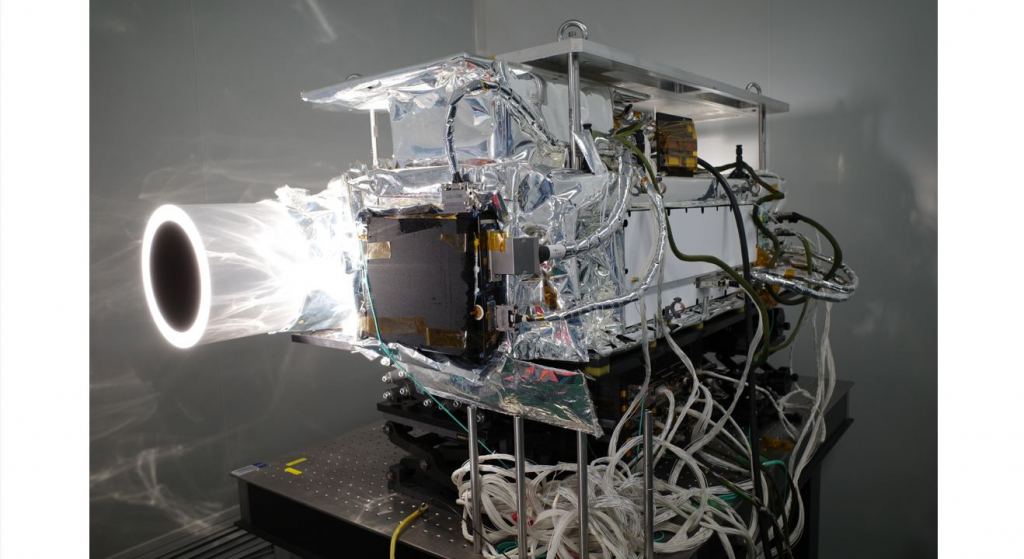China launches ASO-S, its first mission to explore the Sun.
One thing’s certain in modern astronomy: you can’t have too many missions exploring our host star. This is especially true in 2022, as Solar Cycle #25 gets underway in earnest, and heads towards its peak in 2025. China entered the quest to explore our Sun this past weekend, with the launch of its new Advanced Space-based Solar Observatory (ASO-S).
The launch occurred on Saturday, October 8th (Sunday, October 9th local time) at 7:43 PM EDT/23:43 Universal Time (UT) from Jiuquan Satellite Launch Center in China, aboard a Long March-2C rocket for the China Aerospace and technology Corporation (CASC). Though China has fielded brief solar experiments on crewed Shenzhou missions in the past, ASO-S is the nation’s first dedicated solar observing mission.
 The orbital trace of ASO-S. Credit: Dave Dickinson/Orbitron
The orbital trace of ASO-S. Credit: Dave Dickinson/OrbitronASO-S is now listed in the satellite catalog as NORAD ID 2022-129A/54029. The mission is now healthy and in a 713 by 732 kilometer sun-synchronous orbit around the Earth. The Advanced Space-based Solar Observatory (ASO-S) is nicknamed Kuafu-1, after a giant in Chinese lore who attempted to chase the Sun (depicted on the mission patch). The mission is part of the proposed Kuafu Project, a triad of space weather satellites.
 ASO-S patch. (Credit: CAS/CNSA).
ASO-S patch. (Credit: CAS/CNSA).The 900 million yuan ($126 million USD) mission was a long time coming, tracing its roots all the way back to the 1976 ASTRON-1 concept. The idea got more traction in 2011, and was formalized in 2017 under the Chinese Academy of Sciences’ Strategic Priority Research Program of Space Science, which is analogous to NASA’s Decadal Survey.
 An artist’s conception of ASO-S in orbit. Credit: CAS/CNSA.
An artist’s conception of ASO-S in orbit. Credit: CAS/CNSA.A key goal for ASO-S will be to chronicle and understand the relationship between the Sun’s magnetic field, and the often energetic emissions it produces. On a four year nominal mission, scientists hope that spanning the peak of Solar Cycle #25 should provide lots of opportunities to see an abundance of solar flares. ASO-S is also unique in that it will see the poorly understood ‘middle corona’ region along the entirety of the UV ultraviolet spectrum.
 The coronagraph foot-print versus the ‘middle corona’ region. CASA/ASO-S/ONSET
The coronagraph foot-print versus the ‘middle corona’ region. CASA/ASO-S/ONSETObservations provided by ASO-S will also complement ESA’s Solar Orbiter and NASA’s Parker Solar Orbiter. These contrasting perspectives could provide stereoscopic views of flares from heliocentric versus geocentric perspectives. This, in turn, could help to solve the puzzle of ‘directivity’ or how intense solar flares tend to flow in a particular path.
To accomplish this, ASO-S carries a trio of instruments: a Sun-blocking coronagraph which will study the corona in the ultraviolet to visible range, a magnetograph to cover the Sun’s magnetic field, and an X-ray imager for studying high energy bursts in powerful solar flares. These instruments will combine to provide simultaneous observations during solar events.
 ASO-S in the clean room on Earth. (CAS/CNSA).
ASO-S in the clean room on Earth. (CAS/CNSA).A Unique Solar Mission
To this end, ASO-S observe the “two most violet phenomena on the Sun—solar flares and CMEs—to observe their formation, evolution, interaction and relationships,” chief mission scientist Dr. Weigun Gan of Purple Mountain Observatory in Nanjing, China told Universe Today. “With such characteristics, ASO-S is specially good for studying the relationships between the solar magnetic field, solar flares and Coronal Mass Ejections (CMEs).”
Next up, ASO-S will undergo a 3-6 months of commissioning phase on-orbit. Watch for the mission to begin providing images of the Sun daily to the public once commissioning and checkout is complete.
“After the commission phase is finished, all the data and software will be opened to the community,” says Gan.
 The ASO-S team with the spacecraft, shortly after encapsulation. CAS/CNSA/ASO-S.
The ASO-S team with the spacecraft, shortly after encapsulation. CAS/CNSA/ASO-S.Solar Cycle 25 is shaping up to become the most studied solar cycle in history: in addition to ground-based observatories, missions in space looking sunward include: NASA’s Solar Dynamics Observatory, Japan’s Hinode, ESA’s Proba-2, the joint ESA/NASA SOHO mission, the Parker Solar Probe, STEREO-A and ESA’s Solar Orbiter.
ASO-S/Kuafu-1 will be one to watch, as we unlock the secrets of our host star.

